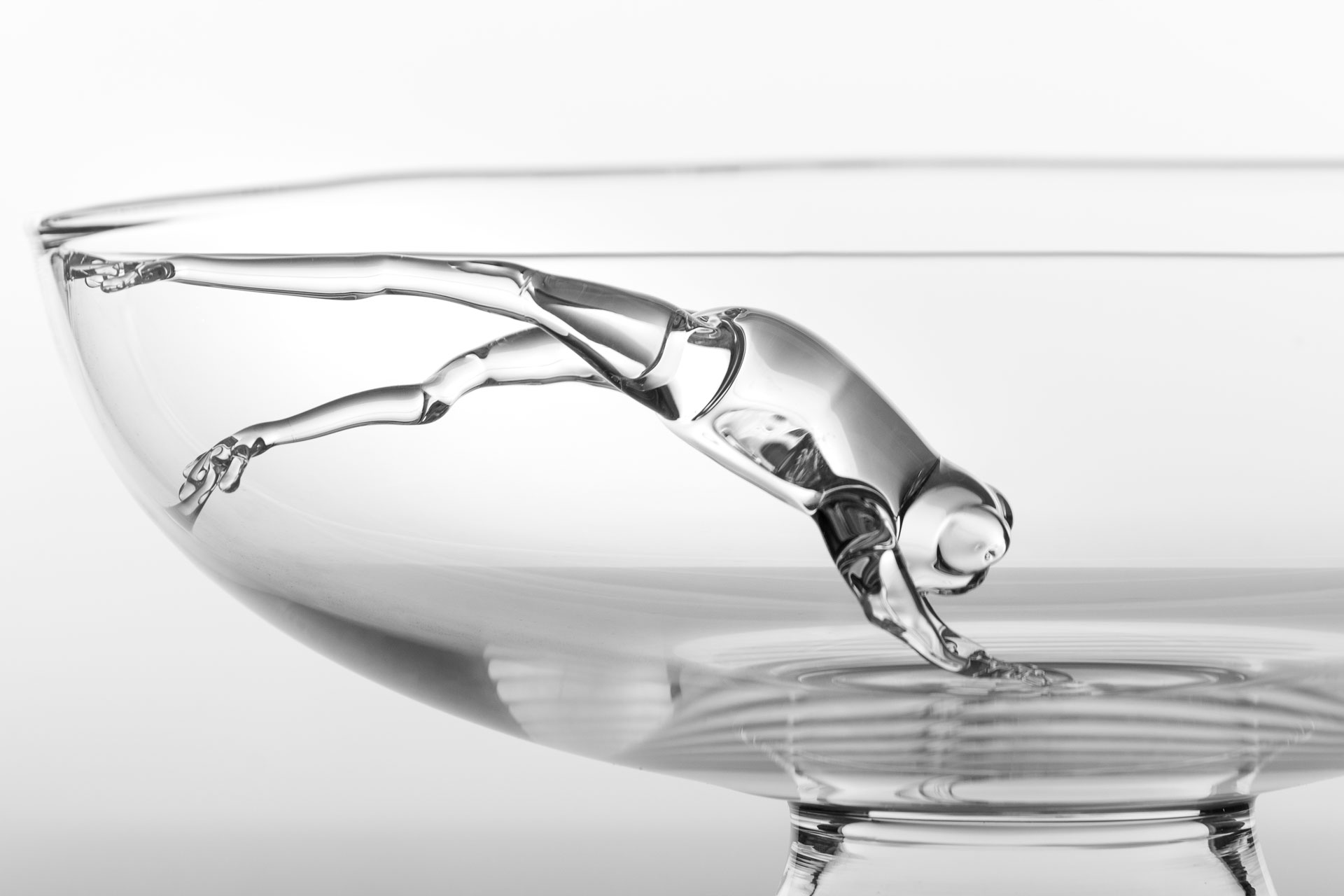
Movement in Glass
How do you give a sense of motion to something that is immobile?
Giving a sense of movement to a still, solid material is one of the most difficult challenges I have faced in my long career.
It almost seems like an understatement since glassmaking is based precisely on the continuous, equilibrated, and never unbalanced movement of the material itself. I like to think that in a sense movement is part of every piece of glass worked. In fact, when I stand in front of any piece of work, I often begin to imagine the workmanship behind it, the confident, methodical movements of the master glassmaker who produced it.
What I can say that I have understood is that first of all it is necessary to know perfectly the succession of movements of the chosen subject. One must make them one’s own, record them in memory and fragment them into small instants.
A mouse grabbing a crumb of food, an eagle spreading its wings, a fish veering dancing with its elegant fins, a frog diving into its pond to take a swim.
It is like, in a way, trying to “photograph” through glasswork the sinuous movements of these enchanting animals.
Behind the silent stillness of my pieces are hidden continuous and meticulously researched movements, can you imagine them?
